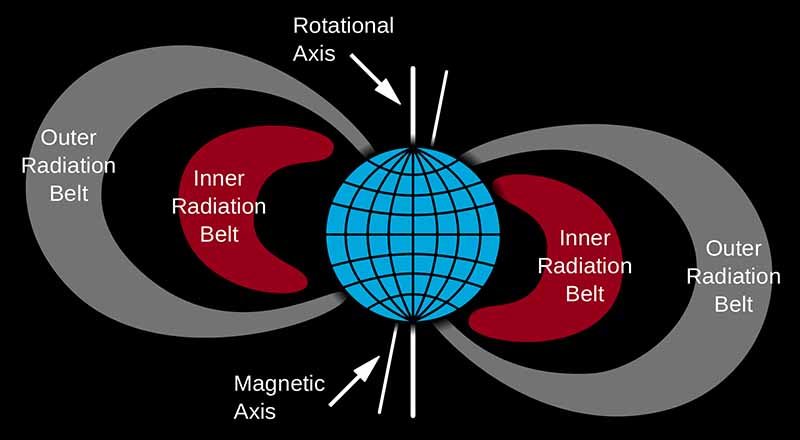According to NASA, our planet is close within the center of two large, coaxial doughnuts of powerful radiation: the Van Allen radiation belts, that harbor swarms of charged particles that are trapped by Earth’s force field.

On March 17, 2015, an interplanetary shock – a shock wave created by the thrust of a coronal mass ejection, or CME, from the sun – affected Earth’s force field, known as the magnetosphere, triggering the best geomagnetic storm of the preceding decade. And NASA’s Van Allen Probes were there to observe the effects on the radiation belts.

What is Van Allen belts?
The term Van Allen belts refers specifically to the radiation belts surrounding Earth; however, similar radiation belts have been discovered around other planets. The Sun itself does not support long-term radiation belts, as it lacks a stable, global dipole field. The Earth’s atmosphere limits the belts’ particles to regions above 200–1,000 km, while the belts do not extend past 7 Earth radii RE. The belts are confined to a volume which extends about 65° from the celestial equator.
A radiation belt is a layer of energetic charged particles that is held in place around a magnetized planet, such as the Earth, by the planet’s magnetic field. The Earth has two such belts and sometimes others may be temporarily created. The discovery of the belts is credited to James Van Allen and as a result the Earth’s belts bear his name. The main belts extend from an altitude of about 1,000 to 60,000 kilometers above the surface in which region radiation levels vary.
Also Read this:
Comparison between Apple Siri, Google Assistant, Microsoft Cortona and Amazon Alexa

Share your thoughts